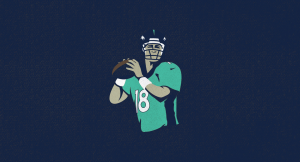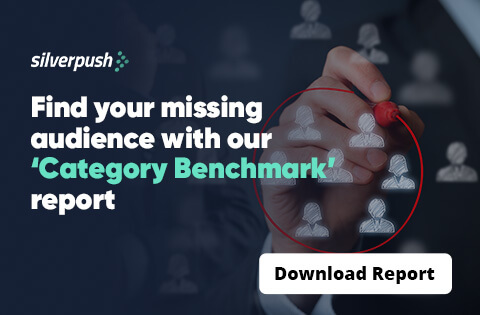The Importance of Brand Safety in Digital Advertising | 10 Jun, 2022

After the Covid-19, the usage of digital platforms has experienced a major jump. Not letting this opportunity go to waste, brands made good use of it to spread awareness about their products as much as they could.
However, as there are no roses without any thorns, there have been many events and controversies making their way in the digital sphere too. This has made brands more aware about the importance of brand safety in digital advertising.
Even after spending millions of dollars on advertising, mixing fake news with genuine digital advertising is not what any brand would desire
For example, a bottled water company like Danone, Bisleri or Nestle wouldn’t want their ads to be played on an article talking about plastic water bottles polluting the ocean.
When it comes to sites like YouTube, advertisers have little control or knowledge about where their ads are being played.
Therefore, it is highly critical for advertisers and publishers to educate themselves on brand safety issues.
What do you Understand by Brand safety?
Brand safety is the technique of preserving a brand’s reputation and preventing it from appearing in highly dangerous circumstances like hate speech, terrorism, illegal drugs, piracy, obscenity, death/injury, etc.
The basic purpose of brand safety is to associate the brand with good, authoritative, and non-confrontational content. To eliminate unwanted or incorrect brand connections, primitive tactics such as term banning and URL blocklisting were utilized to achieve success in this attempt.
Why is Brand Safety Important in Digital Advertising?
Many people believe that advertising is separate and apart from the content of the page where it appears. However, this is not the case!
Consumers connect brands with the content around which are displayed and as an implicit endorsement of such content. A bad implicit endorsement might have long-term consequences for the safety of the brand.
Following are some of the reasons why brand safety is vital in advertising:
- Maintaining a Good Reputation of the Brand
This is essential to the company’s success and prosperity. When advertisements appear alongside real content, consumers are more inclined to interact with the brand.
Consumers also believe that it is the brand’s responsibility to place itself among the top quality content.
According to a survey, the majority of polled customers claimed they would quit using a brand if it showed next to fake news or objectionable content.
- Affecting the Performance of Digital Marketing Campaigns
Furthermore, associations, whether favorable or bad, have a direct influence on the efficacy of your digital marketing activities. Using a brand safety provider gives consumers the image of quality and dependability, which leads to greater real interest.
- First impression is the most lasting impression
While a well-established brand may not incur significant ad revenue losses from a single occurrence, a smaller business requires reputable sources to create credibility.
Brand safety in digital advertising should not be underestimated. It has an impact on the brand’s reputation and, as a result, ad income and sales.
Who Decides What is “Safe” or “Unsafe”?
There are many organizations who are striving to define brand safety procedures. Among them are the most popular organization, Interactive Advertising Bureau (IAB) and the Media Rating Council (MRC).
These trade groups, in collaboration with brand safety vendors, set guidelines and best practices for publishers, advertisers, and agencies to follow to maintain a healthy supply chain, and thus protect them from placing their ads on any content that is not safe.
They provide the foundations to guarantee that the publisher’s inventory is accessible, complies to privacy standards, and follows best practices for placement. Similarly, advertisers have brand authenticity and restricted material for ad standards.
Ensuring 360 Degree Brand Safety with Mirrors by Silverpush
Mirrors by Silverpush keeps brand safety as the top priority and through its AI-powered in-video context detection solution delivers brand safety controls without killing your reach and tackles the problems of over-blocking.
The deeply trained proprietary AI models detect custom-defined unsafe contexts like faces, actions, objects, and scenes in a streaming video. These videos are classified into many levels of video content, including smoking, adult, violence, wrecks, arms, terrorism, and others.
Along with this, it also focuses on brand suitability through text & sentiment analysis, engagement metrics, and organic influence at the video level.

BLOGS
Super Bowl Advertising: A Month-Long, Multi-Screen Event for Brands
For Americans, there are two events that they hyped for a whole year - Football season, and waiting for football season. Football remains highly popular among Americans, with searches for "NFL Draft" and viewership numbers showing an unwavering interest in the sport. According to Google Search data, football is more ...

BLOGS
Advertising in the Age of Climate Change: The Adoption of Carbon Emission Metrics
The urgency of the climate crisis is increasing, and the media industry is no exception. While some professionals are working to reduce their direct operational emissions, there is an urgent need for common standards to be set for indirect emissions that come from digital advertising. The digital advertising industry is becoming ...

BLOGS
Complete Guide to Reaching Audience with Cookieless Advertising
What’s your alternative game plan for effective cookieless advertising? Haven't thought about it yet? The time is now! Introduction The complete year of 2022 was dedicated to cookies! Panic is setting in amongst marketers owing to mounting privacy laws and the ban on cookies, causing them to re-evaluate their strategies.







